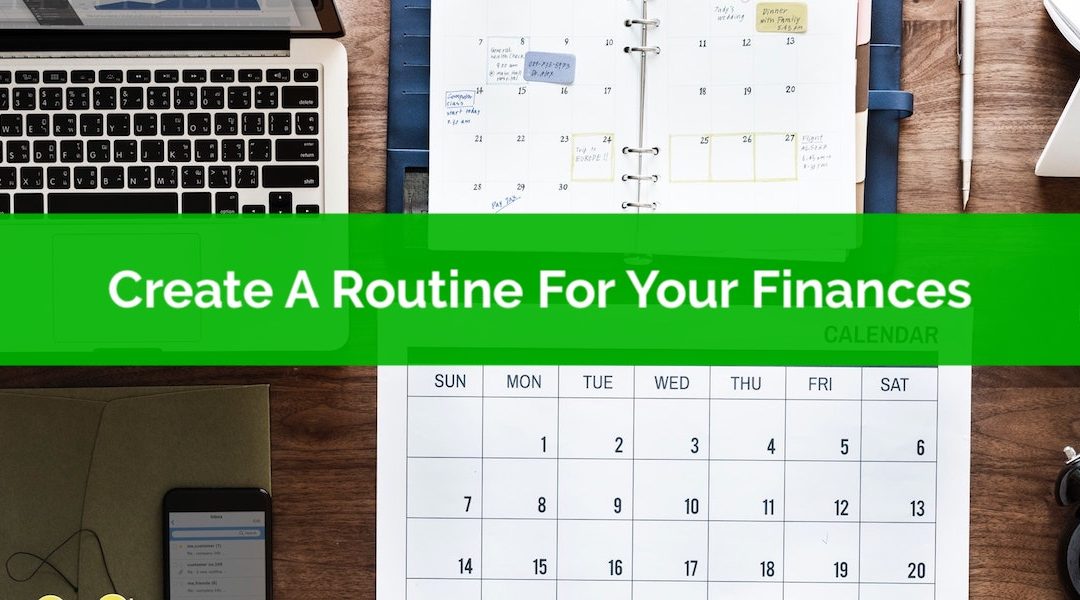
by Owen | Sep 6, 2022 | Behavioral Finance, Budgeting, Buying A Home, Down Payment, Emergency Fund, Financial Planning, Get Out Of Debt, Retirement Planning
There are certain habits that make things way easier, these habits are more important than others, these habits are called keystone habits. Keystone habits create a foundation from which you can make even bigger and more positive changes. Mastering the right keystone habit can transform your life.
We have habits everywhere in our lives and we build new habits all the time (both good and bad!). We use these habits to support our daily lives. These habits make our lives easier, you don’t have to think about what you’re doing, it just comes naturally.
Having a solid keystone habit will create a foundation from which you can make even bigger changes. Eating right, getting regular exercise, sleeping eight hours per night, these are all keystone habits that create a solid foundation from which you can make even more positive changes in your life.
The best part about keystone habits is that once they’re established they don’t take much effort to maintain.
When it comes to personal finance there are 4 important keystone habits. Once these habits are established they create a ripple effect through the rest of your personal finances.
If you practice these four keystone habits then there is nothing you can’t achieve with your personal finances!

by Owen | Aug 29, 2022 | Behavioral Finance, Budgeting
Routines add structure and discipline to our lives. They make things easier. When we’re in a good routine things seem faster, easier and more efficient. We know exactly what to expect and how to do it.
Creating a routine for your finances is a great way to add structure and discipline to your financial life. It makes you more efficient and happy with your finances (and who doesn’t want that?).
Anyone who has spent too much time managing their finances knows how quickly you can feel burnt out. This is called budget fatigue and it’s a very real problem. It’s when you spend so much time and effort managing your money that you end up making worse spending decisions because you’re just so tired.
Having a routine helps you manage your finances more efficiently. It’s one of the easiest ways to improve your finances for the long term. Your routine can include things like budgeting, investing, saving etc.
For years and years, we’ve been on a 4-month personal finance routine. We review our finances only three times per year. How’s that for efficient!
We review our finances once in mid-January, once in mid-May and then once in mid-September.
During these reviews, we sit down and look at our spending, our budget, our investments, our contributions and we see if we need to rebalance or not. We also talk about the next 4-12 months, what special expenses we can expect, and if we should make changes to our regular budget.
During these financial “check-ins” we also review our long-term financial goals. We check to see if we’re on track or if we need to make changes to either our expectations or our savings rate.
Having this routine has improved our personal finances immensely and I recommend everyone create a routine for their finances so you can experience these benefits too.
There are four main ways our personal finance routine has helped improve our finances…

by Owen | Jul 25, 2022 | Behavioral Finance, Financial Goals, Financial Planning, Income, Investment Planning, Retirement Planning
Does the 4% rule make a good retirement plan? Before we answer that question let’s first explore what the 4% rule is and some of its pros and cons.
The 4% rule is a great personal finance rule of thumb.
Like many rules of thumb, it provides good direction for financial goals, it’s simple, it’s easy to understand, and it’s relatively accurate.
Unlike other personal finance rules of thumb, the 4% rule is also backed up by quite a bit of academic research, so if there was any personal finance rule of thumb to use, it would certainly be the 4% rule.
Let’s review what the 4% rule is in more detail, the pros and cons, and why you may or may not want to use the 4% rule for your retirement plan.

by Owen | Jul 11, 2022 | Behavioral Finance, Financial Planning, Investment Planning, Retirement Planning
When the stock market drops, what should you consider “normal” and when should you be concerned?
When there is a stock market drop, a large stock market correction, or a recession, it can be very disconcerting to see your portfolio drop day after day and week after week. For new investors, and even many experienced investors, seeing their portfolio decline by $1,000, $10,000, or even $100,000+ can be tough to stomach.
But as investors, we should anticipate that our portfolios will drop and some point. A portfolio will probably go through 5-10 large stock market drops over a lifetime. The question is, how large a drop is considered “normal”? And at what point should you be concerned?
During a large stock market drop it can be hard to avoid negative headlines. Bad news sells and when the stock market drops it can make headlines for months or years. This “headline effect” can cause even more panic.
But large drops in the stock market have been happening for decades. The reason may be different, but the result is always the same, a large decline in portfolio value followed by a recovery (at some point).
These historical stock market drops can teach us a good lesson about what is considered “normal”.
What “normal” is will depend on a few factors. The first factor is your level of diversification. The second factor is your current asset allocation, how is your portfolio allocated between equities and fixed-income. The third factor is if you’re currently in the accumulation phase, which can help mute the impact of a large stock market drop, or if you’re in the decumulation phase, when retirement withdrawals can amplify the impact of a large stock market decline.
Let’s look at some historical data to understand what “normal” looks like based on some of these factors.

by Owen | Jun 20, 2022 | Behavioral Finance, Budgeting
Habits. They’re both good and bad.
Habits are tough to change because for the most part they occur subconsciously. You’re not really in control. You may not even realize it’s a habit. You think you’re making a decision but really it’s just a habit driving your actions.
When you have a habit, good or bad, you’ve been wired through repetition and rewards to make the same actions over and over. Truthfully you have very little control.
Habits form when a behaviour is repeated often enough to become automatic. There are typically three phases to creating a habit, the cue, the routine, and the reward.
For example, a regular exercise routine is an extremely beneficial habit. Regular exercise can greatly improve your overall health and wellbeing. Getting 75 minutes of exercise each week can extend your lifespan by as much as 4.5 years! (Not to mention you feel so much better!)
Unfortunately, habits can work against you too. Bad habits can form just as easily as good habits.
Bad habits usually form during stressful times, during big life changes, and when you’re bored.
Bad spending habits are particularly easy to form because there is an immediate reward for spending money. Bad spending habits are also easily formed because there are spending cues all over the place in the form of advertisements.
Bad spending habits can be very detrimental to your financial health. Even a few bad spending habits can cost you $50-$100 per week. Over the course of your lifetime those habits can cost you hundreds of thousands of dollars (See the difference just $10/day makes!)
If you think you may have some bad spending habits I’ve got a challenge for you!
Try doing a “no spend” challenge this month. For the next 30 days you should spend no money at all. NOTHING!
Doing a “no spend” month is a great way to reset your spending habits (and save a bunch of money!)

by Owen | May 30, 2022 | Behavioral Finance, Financial Planning, Investment Planning, Retirement Planning
Investing with ETFs has become commonplace over the last 5-10 years, and with good reason, investing with ETFs can provide an easy, low-cost, highly diversified way to create an investment portfolio. But with all the attention ETFs have been getting, it’s understandable that mistakes are being made when self-directed investors are implementing their ETF portfolios.
As an advice-only financial planner, we work with a lot of self-directed investors who want to create a more detailed financial plan. We see a lot of investment portfolios, some of which are excellent, and some with opportunities to improve.
ETF investing has become popular thanks to personal finance bloggers like Canadian Couch Potato. By copying a simple 3-4 fund Canadian Couch Potato portfolio, it’s easy to create a simple, low-cost, and highly diversified investment portfolio.
This low-cost index investing approach is typically what people are referring to when they talk about ETF investing. The issue is that this nuance/detail is often not mentioned or glossed over when ETFs are discussed in the media/newspapers/online forums etc.
The result is that there are many self-directed investors who are keen to use ETFs but are making “mistakes” that could increase their investment fees, decrease their level of diversification, increase their level of risk, or decrease their long-term returns.
Mistakes is in quotations because these are only mistakes when compared to a simple 3-4 fund portfolio (or an even simpler all-in-one portfolio). Some investors may not think these are mistakes at all, but I would challenge any self-directed investor to watch out for the mistakes below, and carefully consider if they may be making some or perhaps all these mistakes when creating an investment portfolio.






